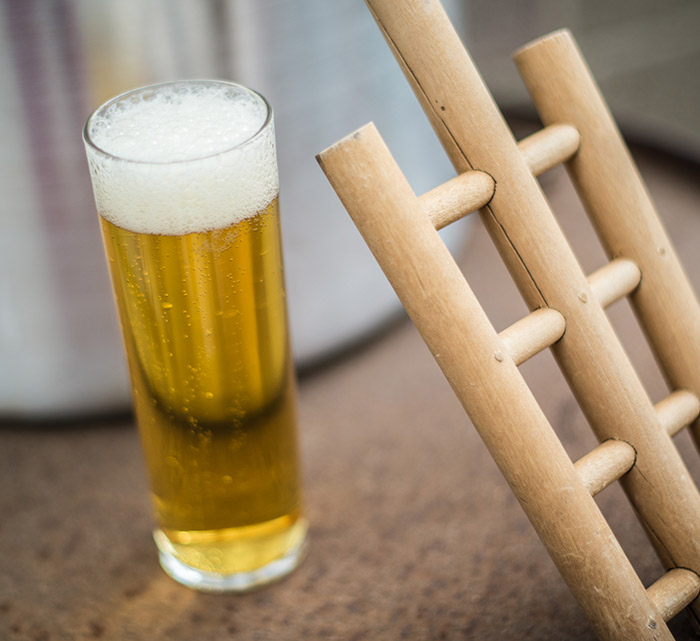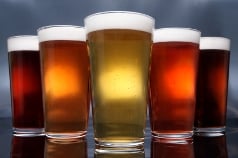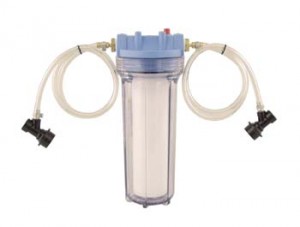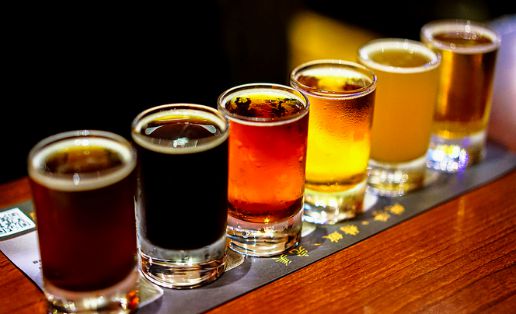
For many, lagers are a daunting category of beers to attempt to make on the homebrewing level. Recipes tend to call for decoction mashes and long periods of near-freezing fermentation temperatures, which can be difficult without the ideal equipment. But don’t let this rule out lagers in your homebrew future! Bryan Cardwell of Washington-based Chuckanut Brewery explains some ways to make lager brewing more approachable.
Decoction Mashing
A decoction mash involves pulling a portion of thick mash into a pot and bringing it to a boil. This helps further break down proteins, increase free amino nitrogen (FAN) levels and solubilize more starches. Traditionally this was used by German lager brewers out of necessity to get the most extraction out of their undermodifed malts.
The result is a decreased enzyme count, increase color extraction and caramelization, increase extraction of sugars and more melanoidin, which gives some lagers that bread crust-like characteristics.
Today, most malts are well-modified and don’t require decoction, but it is often still conducted out of respect for tradition and to achieve some of the color and flavor attributions. Instead of a true decoction, a few homebrew tricks can be done to simulate the additional mash step without actually having to do it.
- Use a higher mash infusion to increase the overall extraction and create more unfermentable sugars that will ultimately leave a higher final gravity.
- Use specialty malts like Munich and melanoidin to get the bread crust flavors, as well as dextrin for more body.
- Increase the boil time for more color and a bit of caramelization.
Yeast Selection & Pitching Rate
Selecting a lager yeast strain can be as simple as using the one from your favorite lager brew, but you still want to keep the overall flavor profile and a few other considerations in mind.
Flocculation is particularly important when brewing lagers. Strains that are very flocculent and fall out of suspension will not be able to sufficiently reduce levels of Vicinal Diketones (VDKs), which cause butterscotch or buttery flavors. You want a yeast that will stay in susepension and in contact with VDKs long enough to reduce their level.
Many commercial lager breweries, including Chuckanut, use Weihnstephan 3470 for its clean and malty fermentation and VDK reduction ability. Homebrewers can find this in Wyeast 2124 Bohemian Lager or White Labs WLP830 German Lager.
Pitching rate is extremely important because lager yeast does not have as pronounced of a respiratory metabolism as ales, meaning there is less cell growth. When under pitching, there is the risk of not being able to clean up the VDKs, and producing high levels of esters and alcohols that cannot be remedied once they are created.
Generally speaking, plan to pitch 1.5 million cells of yeast per milliliter of wort per degree plato (1.5 mil cells / ml / °P). This will result in a large number of yeast cells, so making a starter will eliminate the need to buy multiple yeast packs. Be sure to sufficiently oxygenate the wort after pitching.
Fermentation and Lagering
There are many schemes for lager fermentation, but Caldwell recommends what he calls cold fermentation with accelerated maturation. It is easiest to follow the recommended schedule using a temperature controlled fermentation chamber, but you can still get good results by using a cold basement or shed.
Start by cooling the wort 3-4°F below the primary fermentation temperature. This will help limit the amount of amino acids and nucleotides excreted from yeast when it enters a state of shock after being pitched into a new environment (pH, sugar content, temperature). The higher the temperature, the more excretion, which will ultimately negatively impact yeast performance.
After pitching, start the fermentation cool for a few days, and let it naturally warm up 3-4°F for the last 1.008-1.010 for a period of accelerated maturation, which some refer to as a diacetyl rest. This will allow the yeast to metabolize fermentation byproducts like VDKs and acetaldehyde, as well as slightly increase the attenuation.
A good way to check if maturation is about finished is to warm up a sample and taste for diacetyl. If it is present, continue the maturation. If not, move on to the lagering stage.
Lagering is a period of aging at near-freezing temperatures. The goal is to achieve yeast clarification and promote the precipitation and removal of protein-polyphenol complexes, which will create the smooth lager flavor. Caldwell recommends keeping the beer as close to 30-32°F as possible for 2-3 weeks. Generally speaking, the cooler the beer, the less lagering time is necessary.
That’s it. Now get out there and start lagering!











